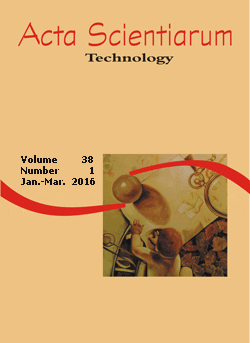<b>Use of avocado peel (<i>Persea americana</i>) in tea formulation: a functional product containing phenolic compounds with antioxidant activity
DOI:
https://doi.org/10.4025/actascitechnol.v38i1.27397Keywords:
avocado, fruit peels, DPPH, FRAP, sensorial analysis, functional foodsAbstract
The peels of avocados, like other fruit peels, are commonly discarded, not knowing their potential use. In order to reuse avocado peel, the chemical and mineral compositions, total phenolic and flavonoid contents as well as antioxidant activities have been investigated by DPPH (1,1-diphenyl-2-picrylhydrazyl) and FRAP(ferric-reducing antioxidant power) methods in in natura and dehydrated avocado peel. Dehydrated avocado-peel tea was manufactured and the antioxidant activity was evaluated, as well as their flavonoid and phenolic compound contents, and compared with other teas marketed. Avocado peel, especially dried avocado peel, contains major phenolic compounds (10,848.27 ± 162.34 mg GAE kg-1) and flavonoids (1,360.34 ± 188.65 mg EQ kg-1). The avocado-peel tea showed antioxidant activity by DPPH (1,954.24 ± 87.92 e 2518.27 ± 192.59 mg TE L-1) and phenolic and flavonoids contents highest than apple tea. The avocado-peel tea showed good antioxidant activity and had good acceptability by sensory analysis as a promising product.
Â
Downloads
Downloads
Additional Files
Published
How to Cite
Issue
Section
License
DECLARATION OF ORIGINALITY AND COPYRIGHTS
I Declare that current article is original and has not been submitted for publication, in part or in whole, to any other national or international journal.
The copyrights belong exclusively to the authors. Published content is licensed under Creative Commons Attribution 4.0 (CC BY 4.0) guidelines, which allows sharing (copy and distribution of the material in any medium or format) and adaptation (remix, transform, and build upon the material) for any purpose, even commercially, under the terms of attribution.
Read this link for further information on how to use CC BY 4.0 properly.











8.png)




